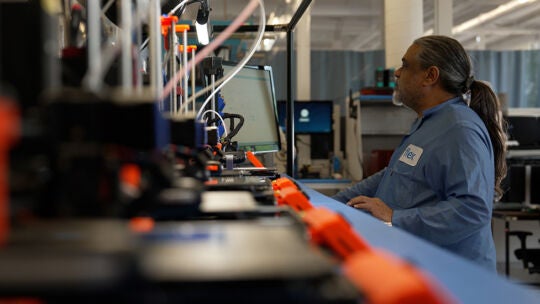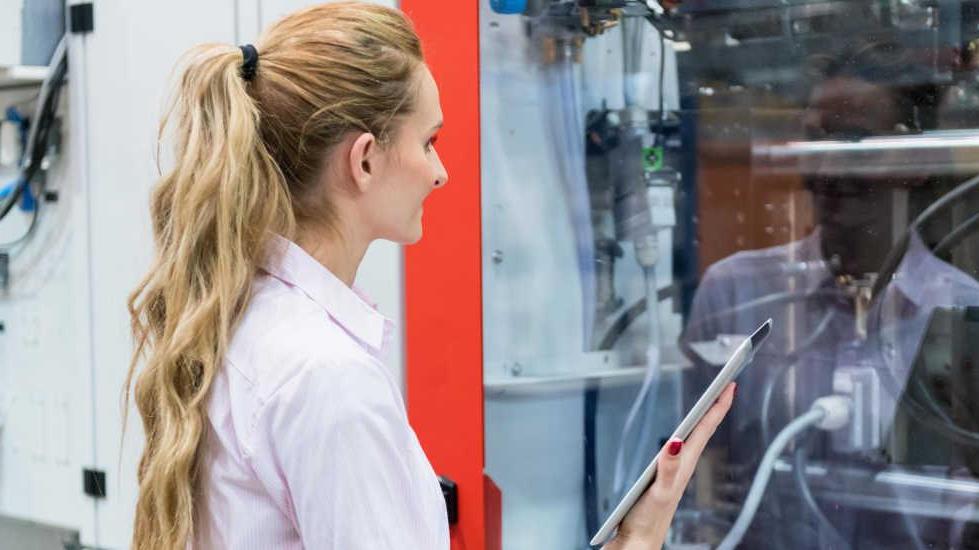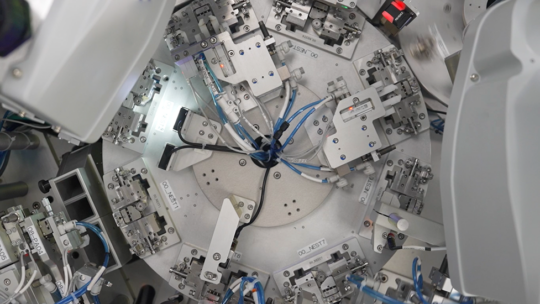
Smart automation drives the transition to industry 4.0
Legacy manufacturing systems are transitioning to smart, connected, automated systems. We’re not only moving through the industry 4.0 transition with you; we’re helping define it.

How we help define industry 4.0
We’re cutting costs and improving efficiency with technology to automate processes, collect data, and integrate to the entire production network. We look closely at the data we collect to gather insights that drive best practices and improvements. Striving for accuracy is core to our predictive intelligence, not only to lower costs but also to use energy and materials efficiently, which contributes to building a sustainable future. This is what we call modern manufacturing.
Smart sensors
Sensors can make lighting, heating, and machinery more cost efficient and sustainable. They give us the ability to deep dive into data to predict potential inefficiencies in a production line and make improvements as we measure our success. They allow us to look at our systems objectively and give us real-time accurate information.
Our sensors are enabled by the Internet of Things (IoT) and embedded in the system, automating the process of data collection. They have the potential to capture every detail. Sensors feed data to machines that crunch the data to gather insights into where improvements can be made. This machine-to-machine communication and analytics capacity speeds up and scales production — enhancing your ability to compete.
Retrofitting existing machines to collect data
Today’s machines need to be flexible and easy to redeploy. A machine designed to work for 50,000 hours may need to perform on high volume initially, but when a product becomes outdated or upgraded, it needs to be ready for a new application. This is different from the traditional model in which a machine plays a specific role for years or even decades.
Companies with expensive machinery are not ready to throw them out. Most need to continue producing with their expensive equipment that was designed — and costed out — to last for decades.
But now they need to provide data so we can accurately measure speed, output, and ability. How do we address this challenge? We retrofit existing machines with new tools and systems and make sure they can remain functional so their owners can remain competitive.
With our deep understanding of the manufacturing process, we can bridge the gaps between old technology and new technology, communication, and automation.
Modular automation and robotics
In our own factories, we are increasingly seeing the benefits of smart automation and robotics as modular systems. Automation is not about introducing one new machine — it’s about getting many machines to communicate with each other and work side-by-side with humans in harmony. This requires a new way of thinking, combined with highly targeted business goals and intelligent machine-to-machine communications.
Supporting wide adoption of industry 4.0 standards
While industry 4.0 has been in the works for several decades, the technology and standards driving the infrastructure are still very new.
To support the future of modern manufacturing, we believe in working with open standards and support wide adoption of these standards to ease collaboration between all the players in manufacturing.


